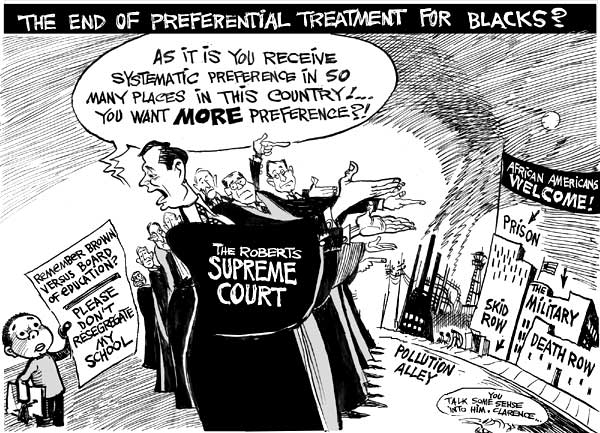Are We Seeing Light at the End of the Re-Segregation Tunnel?

Are we seeing light at the end of the resegregation tunnel? The work of Nikole Hannah-Jones, Chana Joffe-Walt, Alana Semuels, and the scholars who help inform their journalism provides hope, as does the first episodes of David Simon's and Paul Haggis's new HBO miniseries, Show Me a Hero.
The genius of This American Life, for instance, is similar to that of Simon and Haggis, and together their work may contribute to a critical mass of Americans rethinking our benign neglect attitude toward segregation. Like HBO, NPR portrays individuals in a way that makes children's and parents' emotions and voices come alive.
As we study a wave of carefully-honed analyses of integration's potential to improve schools and our entire lives, we should pay special attention to the beginning of The Problem We All Live With Part Two. High School freshman Kiana Jackson "is a kid who frequently scans the room for a more exciting option than what is right in front of her," Joffe-Walt reports. So, "of course," this is how Kiana reacted when she saw a bunch of white kids who she knew for sure did not go to her school:
And we're like, there's no white kids in our school. And then like, I'm a really social person. So I see these kids and I was like, OK, they do not go here. What are they doing here? I want to find out.
Similarly, the Atlantic Magazine's Alana Semuels, in The City That Believed in Desegregation, adds to the work of Sarah Garland, who documented what went right with integration in Louisville, Kentucky. At first, white resistance was intense, but as Gary Orfield of the Civil Rights Project at UCLA reminds us, "Many of the residents' fears failed to materialize, and after a few years the protests ceased." He describes the driver of success, "people are amazed to discover that people from another race or ethnic group are actually pretty similar to them."
Orfield further explains why Louisville was right to stay the course, "One of the reasons white people leave central cities is because schools become segregated before neighborhoods do. ... White families stop buying in certain areas where the schools become all poor and non-white."
On the other hand, Failure Factories, by Cara Fitzpatrick, Lisa Gartner, and Michael LaForgia of the Tampa Bay Times, documents the tragedy of resegregation in Pinellas County, Fl. Fitzpatrick, Gartner, and LaForgia explain that desegregation efforts Are We Seeing Light at the End of the Re-Segregation Tunnel? | John Thompson:
